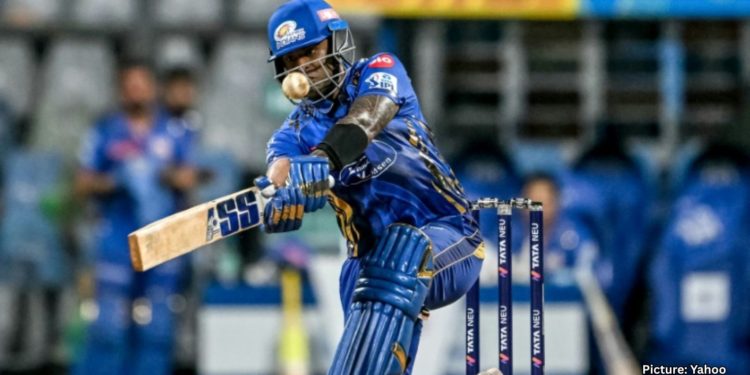Last year, Himanish Ganjoo and Sidharth Monga delved into data to determine the ideal length for a T20 spinner. Their analysis yielded two noteworthy discoveries: firstly, spinners have been increasingly using shorter stock lengths; and secondly, this shift has corresponded with a notable increase in speed.
In the IPL, spinners are opting to deliver fast, low-pitched balls that land in the 5-7m range and end up near the top of the stumps. The more traditional ideal length for spinners is typically between 4-5m, forcing batters to move forward without giving them room to drive, while a defensive good length falls between 5-6m. However, because pitches are now flatter and T20 hitters have strong shots straight down the ground, spinners tend to favor shorter deliveries and a faster pace. This strategy limits batters’ ability to hit boundaries in most situations.
Axar Patel epitomizes the modern T20 spinner. Rarely dipping below 90kph, his speeds often reach above 95kph. Focusing on pitching into the stumps, he aims to prevent batters from stepping down and hitting him directly. Additionally, his strategic line makes the sweep a risky choice for opponents. Moreover, pulling becomes tricky for right-handed batters due to his wide release and angle that constricts their space.
That was not your typical pulled six. Aniket Verma scored it off Axar in the eighth over of Sunrisers Hyderabad’s (SRH) innings against Delhi Capitals (DC) on Sunday afternoon. The ball was only marginally shy of being a good length, with a pitch distance of 6.57m from the stumps and a speed of 88.87kph when delivered. In true Axar fashion, it was angled towards the batter and maintained its trajectory even after pitching, possibly landing just above and outside the line of leg stump.
Although not quite at the ideal length, this delivery was on the slower side compared to Axar’s usual standard. However, it was still a decent speed overall. This allowed for a brief moment and appropriate distance from the ball to execute a pull shot, but doing so required impressive quickness in both vision and movement.
At the opposite end stands Heinrich Klaasen, a true master of this particular shot. It must have been a proud moment for him to execute it.
The shot was truly remarkable, especially given the circumstances. Aniket had entered the game when the score was 25 for 3 and it quickly became 37 for 4. However, he remained unfazed and focused solely on the ball and getting rid of it from his presence. This particular hit marked his second six and fourth boundary in just 14 balls, bringing his total to 26 runs.
His follow-up after the next ball was even more impressive, as Axar expertly adjusted his delivery in terms of both length and pace. He opted for a slightly fuller length, approximately 6m away from the stumps, resulting in the shortest edge within the good-length vicinity. Additionally, he increased his speed to 95.61kph.
This type of ball can be challenging to hit, especially when aiming downwards. However, Aniket defies this difficulty with his quick decision-making and swift movements as he advances towards the pitch. Despite not fully reaching the ball’s level, he expertly punches it through the line and sends it soaring with a one-bounce shot to the sightscreen.
Having only played one senior match prior – a T20 game where he scored a first-ball duck – Aniket entered this IPL with minimal experience. His noteworthy displays were mainly at the Under-23 level or in the Madhya Pradesh League, all showcasing his impressive ability to hit sixes consistently. However, it was uncertain if he could replicate this against high-caliber bowling in the IPL, leading to SRH signing him for his base price.
After only three innings of his debut season, it’s safe to assume he has the ability. Aniket faced a total of 56 balls in the IPL and successfully sent 12 of them over the boundary during his impressive performance on Sunday, making him second to Nicholas Pooran (13) in terms of most sixes hit so far in IPL 2025.
Aniket has made an impressive record in the IPL, hitting 12 sixes with the fewest balls faced among uncapped batters. He has shown great prowess against spin, hitting 11 sixes in just 37 balls and maintaining a strike rate of 237.83. Despite only a small sample size, he has also performed well with his pace, scoring 29 runs at a strike rate of 145.00.
Being a part of this SRH team has truly been a catalyst. Despite facing a challenging situation with a score of 37 for 4 against DC, the team remained faithful to their philosophy. This was also evident in their previous game against Lucknow Super Giants, where they found themselves at 15 for 2. In that particular match, Aniket made an impactful entrance at 110 for 4 and delivered five sixes in just 13 balls for a total of 36 runs.
There will likely be much discussion regarding the effectiveness of SRH’s strategy in games such as their two recent losses. However, it is unlikely that this debate will occur within the SRH team itself. As their captain stated, Aniket’s performance was a result of his mindset not being affected by the pressure.
His apparent selectiveness and control in hitting may have been attributed to the deceptive aura that often surrounds a successful innings. However, viewers may have overlooked a half-chance on 6 when he mishit and Abishek Porel failed to catch the ball after it soared high in the air over the covers.
Aniket was the fortunate SRH batter on that day, but it could easily have been someone else. This pooling of risk is what makes a strategy like SRH’s successful, especially with the addition of an Impact Player who allows them to place a skilled player like Wiaan Mulder at No. 9 on days when luck is not on their side.
Batters are required to have the same courage that Cummins expressed, but it also goes without saying that they must possess remarkable skill. Aniket’s initial performances suggest he possesses both qualities.



















